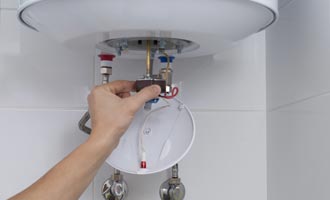We have discovered this post relating to Low Water Pressure in the House? directly below on the net and concluded it made perfect sense to write about it with you on this site.

Low tide stress in your home can be an irritating trouble, affecting whatever from bathing to washing meals. If you're experiencing weak water circulation, there are numerous possible causes and services to discover. In this overview, we'll review common factors for low water stress and useful actions to resolve the problem successfully.
Intro to Low Water Stress
Low water pressure occurs when the circulation of water from your faucets, showers, and various other fixtures is weaker than usual. This can make daily jobs a lot more challenging and less reliable. Comprehending the reasons for low tide stress is vital to finding the ideal remedy.
Typical Sources Of Low Tide Pressure
Faulty Stress Regulators
Pressure regulators are accountable for keeping regular water pressure in your home. If they malfunction, it can result in low water stress or irregular circulation throughout your home.
Community Water Issues
Sometimes, the problem exists outside your home. Metropolitan water supply issues, such as main line leaks or maintenance work, can momentarily lower water pressure in your location.
Pipeline Obstructions
Gradually, pipes can come to be blocked with mineral deposits, debris, or particles, restricting the circulation of water. This is an usual concern in older homes with galvanized steel pipelines.
Corrosion
Deterioration within pipelines can cause leaks and minimized water stress. Corrosion accumulation can tighten water circulation, specifically in maturing plumbing systems.
How to Diagnose Low Tide Pressure
Examining Pipes
Inspect noticeable pipes for indicators of leaks, corrosion, or obstructions. Focus on any type of uncommon sounds, such as banging or rattling pipes, which can indicate concerns within the plumbing system.
Consulting with a Plumber
If you're incapable to pinpoint the cause of low tide pressure, take into consideration employing a professional plumber to carry out a comprehensive evaluation. They can determine underlying problems and advise proper remedies.
Inspecting Faucets and Fixtures
Start by testing the water stress at various faucets and components throughout your home. If the problem is isolated to details areas, it might suggest local issues.
DIY Solutions to Take Care Of Low Water Pressure
Flushing Water Heater
Debris accumulation in the hot water heater can restrict flow and reduce performance. Flushing the storage tank occasionally assists get rid of sediment and keep ideal performance.
Checking Pressure Regulator
Make sure that the stress regulator is operating appropriately. Readjusting or changing the regulatory authority can assist recover correct water pressure throughout your home.
Cleaning Up Aerators and Showerheads
Mineral deposits can accumulate in aerators and showerheads, minimizing water flow. Remove and cleanse these elements frequently to boost water stress.
Clearing Clogs in Water Lines
For small obstructions, try using a plumbing serpent or chemical drainpipe cleaner to clear obstructions in pipes. Beware when using chemicals and adhere to safety guidelines.
When to Call a Professional Plumber
If DIY efforts fall short to settle the issue or if you presume substantial plumbing problems, it's best to seek support from a qualified plumber. They have the knowledge and tools to deal with complicated problems securely and efficiently.
Preventive Measures to Keep Water Stress
Setting Up a Stress Booster
Take into consideration setting up a pressure booster pump to improve water stress in areas with constantly reduced flow. This can be especially beneficial for multi-story homes or homes with high-demand components.
Monitoring Water Usage
Be mindful of water use practices and avoid overtaxing the plumbing system. Straightforward adjustments, such as incredible showers and washing loads, can help maintain appropriate water stress.
Normal Upkeep
Set up routine maintenance for your plumbing system to avoid issues such as rust, leaks, and obstructions. Dealing with minor troubles early can aid prevent more substantial repairs later.
Final thought
Managing low tide stress can be discouraging, however determining the underlying causes and carrying out suitable solutions can recover optimal circulation throughout your home. Whether it's cleansing aerators, checking pipelines, or talking to a plumber, taking aggressive steps can make sure a steady supply of water for your daily requirements.
FOUR WAYS TO FIX LOW WATER PRESSURE NOW
Turning on a shower or faucet only to find the water comes out in a sad, slow drizzle is never a good feeling. How exactly are you supposed to wash a pan or take a quick shower when it takes 10 minutes just to rinse off a little soap? The good news is that when your water pressure is bad, there's always a cause: typically one that can be easily fixed. Here are some of the most common causes of low pressure and what you can do to fix the issue:
DEBRIS AND MINERAL DEPOSIT BUILDUPS
If you notice low water pressure from just one or two of the fixtures in your house, the problem likely has to do with debris buildup. Water is full of minerals and other debris, all of which can accumulate in your pipes and on your fixtures. This can cause a blockage that affects how much water flows through. To fix this, try filling a small plastic bag with white vinegar, and use a rubber band to hang it around your showerhead or faucet. Let the head of the fixture soak for a few hours, and the vinegar should loosen the deposits.
WATER LEAKS
Leaks are another common cause of low water pressure. If water is flowing out of your plumbing through a hole or crack before it can reach your fixture, the pressure coming out of the faucet or showerhead will be lower. A plumbing professional is your best bet for finding and repairing a leak in your water supply pipes.
Leaks are another common cause of low water pressure. If water is flowing out of your plumbing through a hole or crack before it can reach your fixture, the pressure coming out of the faucet or showerhead will be lower. A plumbing professional is your best bet for finding and repairing a leak in your water supply pipes.
A VALVE ISSUE
If you have low water pressure throughout your home, check your main shut-off valve to make sure it's completely open. You may also want to see if there's a pressure-reducing valve installed. If there is, have a plumber help you adjust the settings to get the pressure you're looking for.
OTHERS USING WATER
Believe it or not, your low water pressure could be caused by your neighbors. If you notice low pressure at certain times of day, it may be because you and the people living next to you have similar schedules - when everyone is showering at the same time, the pressure will be lower in every home. Low pressure throughout the neighborhood may also be caused by an issue with your municipal water supply. If that's the case, call the supplier to see if they're working on the issue.
https://www.rotorooter.com/blog/water-leaking/low-water-pressure-fixes/

I have been very curious about 9 Reasons for Low Water Pressure in Your House and I really hope you enjoyed reading the blog post. Loved our review? Please quickly share it. Help somebody else check it out. Kudos for being here. Don't forget to visit our website back soon.
Call